

Windows will open each type of file by using a particular program. It does this through file type associations. However, if a file type isn’t opening in the program you want it to by default, have no fear: it’s very easy to change.
Whether you’ve got a broken file type association or just want to use another program, our three methods below will sort it out and let you have full control over the association defaults.
Be sure to head to the comments section after the article to let us know your thoughts and to share stories and alternative methods.
Every file on your system is stored in a particular format. And certain programs can only open certain files. For example, a photo file like .jpg can’t be opened in a word processor like Notepad. Instead, you’d open the file in something like Windows Photo Viewer.
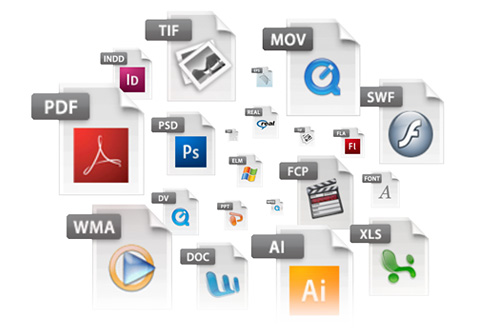
Rather than having to specify which program you want to open a file in every time you access it, Windows assigns each file type a default program that opens it. These defaults can be changed by the user or a program could set its own when installed.
That’s why it sometimes becomes necessary to adjust your file type associations. Handily, it’s very easy and quick to do this. Let’s find out how you can see what type your files are and then the different methods to change the program associations.
Revealing file types is easy. First, navigate to the folder which contains your file in File Explorer. Then, right click the file and select Properties. A new window with details about that particular file will open. Type of file will tell you what the file extension of the file is. Opens with will tell you what program it’ll open in.
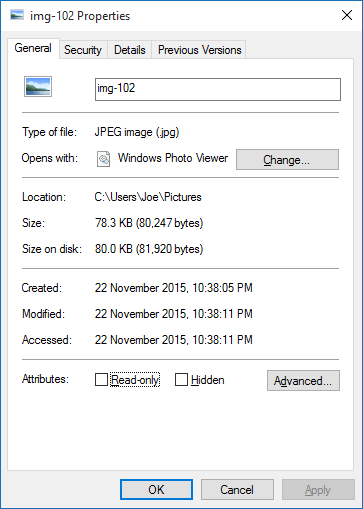
You can set it so that the file extension appears with the file name in File Explorer. To do this in Windows 8 and above, open File Explorer and click the View tab. Then tick the box for File name extensions.
To achieve the same effect on Windows 7, click Organize, then Folder and search options, then the View tab. Locate the line Hide extensions for known file types and untick the box. Then click OK.
There are three quick and easy methods within Windows to change the file type associations.
You can change the file type associations direct from the File Explorer. To do so on Windows 10 and 8, right click the file and then hover on Open with. You’ll see a list of programs, which you can use to open the file, but note that this will just be a one off and won’t change your settings permanently. To make a permanent change, select Choose another app.
Now select the application from the list that you want to use to open the file type of the file you’ve chosen. If you don’t see the program you need, scroll down and select More apps for a wider selection. If it’s still not there, select Look for another app on this PC. You can then go through your Program Files and locate the executable for the program you want.
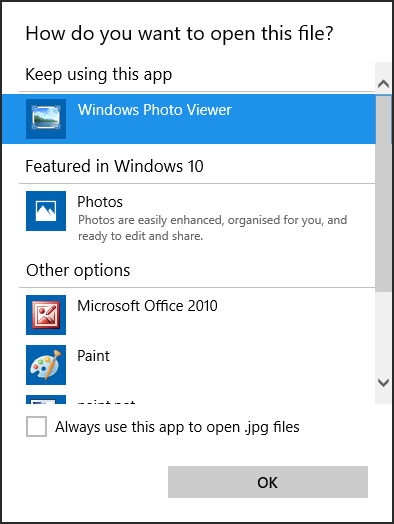
When selected, tick Always use this app to open .X files at the bottom of the window. The ‘X’ will be replaced with the extension of the file you’re using (so in the case of the screenshot above, that’s the image format .jpg.) This will permanently change the file type association. Then click OK.
The process is essentially the same for Windows 7 and prior, except that Open with isn’t expandable and you can Browse for an alternative program straight from the window that opens.
This method is suitable for when you want to select what file types a particular program should open. To find it, do a system search for set default programs and select the result. Along the left-hand side you’ll find a list of all the programs installed on your system. Select the program that you wish to adjust the defaults for and its information will appear on the right.

If you want to use the program to open all the file types it can, select Set this program as default. If you want more control over which file types it opens, select Choose defaults for this program. You’ll see a list with all the available file types, along with what their current default program is. To change them, select or deselect the tickboxes as appropriate and then click Save.
This method is best for when there’s a particular file type that you want to change the program association for. First, do a system search for change the file type and select the relevant option. You’ll see a list of all the file types on your system, along with what the current default program is to open it.
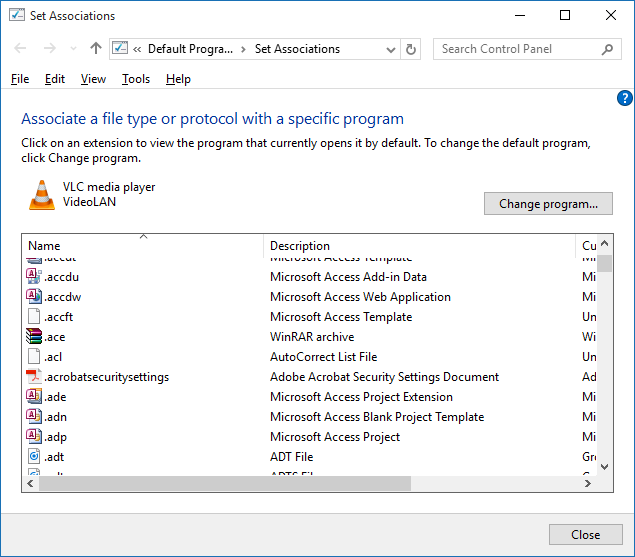
To adjust a file type’s default, select if from the list and click Change program…. Select a program from the list to change the default to. If you don’t see the program on Windows 7, click Browse to find it. On Windows 8 and above, scroll and request More apps and then Look for another app on this PC if you still can’t find it. When selected, press OK.
Windows 10 has been known to reset default apps by changing file type associations after every update. The best thing you can do to fix this, is back up your file type associations and restore them once you discover that a Windows 10 update has messed with them.
The following method works in Windows 10 and older Windows versions. Press Windows key + R to open the Run menu. Enter regedit and hit Enter to launch the Registry Editor. Now browse to the following key:
HKEY_CURRENT_USER\Software\Microsoft\Windows\CurrentVersion\Explorer\FileExts
Right-click FileExts, select Export, and choose a destination and file name for your .reg file backup.
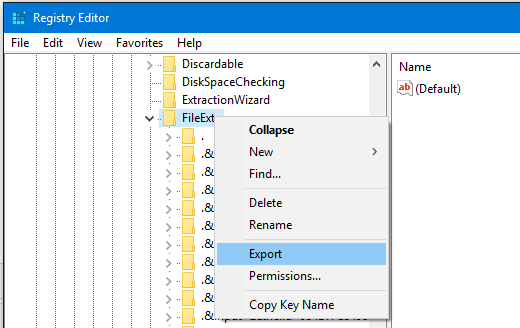
Once you need to restore this backup, right-click the respective .reg file and select Merge. This will overwrite the current settings in your registry and restore your previously backed up preferences.
With these methods you’ll have full control over your file type associations, ensuring that all your files open in the most suitable program by default. Be wary when installing a new program as some of them will request to become the default program for a set of file types, and you might not want that.
If you want more control over changing and removing file types, check out two of the best tools to do that. Alternatively, perhaps you’ve got some files with mysterious file types: find out how to open strange file types in our handy guide.
Have you had problems with this in the past? Do you have any alternative methods to share for changing the file type associations?




 FFXIV: The Collectibles Guide – Crafting Edition
FFXIV: The Collectibles Guide – Crafting Edition Saints Row: The Third Cheats Codes
Saints Row: The Third Cheats Codes First Impressions of Double Fines Spacebase DF-9
First Impressions of Double Fines Spacebase DF-9 NBA 2K15 My Career Guide: Tips & Tricks for a Perfect My Player
NBA 2K15 My Career Guide: Tips & Tricks for a Perfect My Player Pillars of Eternity - Encampment - Quest overview
Pillars of Eternity - Encampment - Quest overview